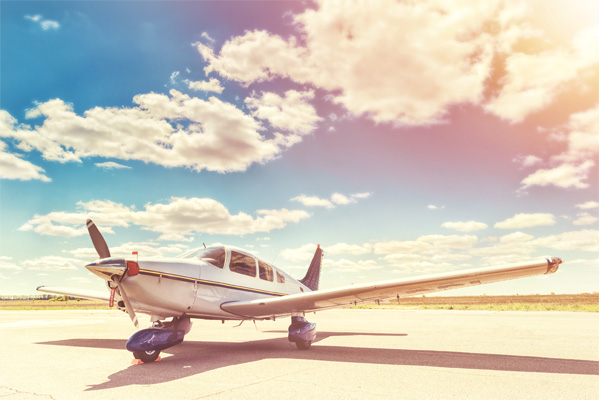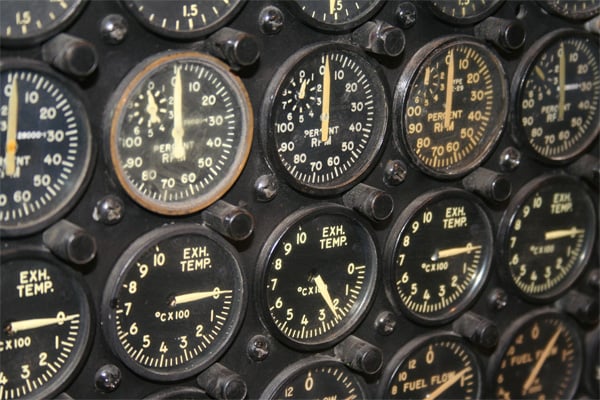What Are Aircraft Fuel Pumps and How Do They Work?
Aircraft fuel pumps are an integral component of an aircraft fuel system, which enables fuel to be loaded, stored, managed, and delivered to the engine. Engine-driven fuel pumps deliver a continuous supply of fuel at the proper pressure during engine operation.
The primary duty of aircraft fuel pumps is to move fuel from the airplane’s fuel tanks to its engine. A fuel control valve regulates fuel as it is pumped from the tanks through fuel lines into the fuel pump and on to the fuel injection system. Auxiliary fuel pumps, or boost pumps, maintain positive fuel pressure in fuel lines between the tanks and the engine-driven pump.

Fuel pumps may also be used to transfer fuel between an airplane’s fuel tanks. At times during flight, a pilot may need to use fuel from one tank instead of both—for example, to equalize the airplane’s load. Since fuel tanks cannot be run dry, auxiliary fuel pumps can transfer fuel between tanks to maintain balanced fuel levels. Fuel pumps also transfer fuel vapor back into the fuel tank on turbocharged applications.
Aircraft fuel pumps are classified based on the pump’s function or by its method of operation. The two main types of engine-driven fuel pumps are gear type pumps, which provide constant fuel displacement, and piston type pumps, which can provide variable fuel displacement. Additionally, electrically driven auxiliary fuel pumps, such as centrifugal booster pumps, can move fuel from the tanks to the engine-driven pumps, or from one tank to another.
How A Fuel Pump Achieves Aircraft Fuel System Pressurization

Aircraft fuel system pressurization begins with the centrifugal boost pump, which is located in or below the fuel tank, and which supplies fuel to the main, engine-driven fuel pump. Most engine-driven pumps are positive displacement pumps, which means that for every rotation of the gears (in gear type pumps) or pistons (in piston type pumps), a fixed amount of fuel will be pushed toward the fuel injection system. An aircraft fuel pump’s capacity must be adequate to supply the engine under all operating conditions, which means that its capacity will necessarily exceed the engine’s needs under most conditions. For this reason, engine-driven fuel pumps include a relief valve that allows excess fuel to be recirculated into the fuel system once optimal pressure is achieved.
Aircraft Fuel Pump FAQs
Below you will find a series of industry frequently asked questions surrounding aircraft fuel pumps. Read on to find out more information about aircraft fuel pumps or contact us today with your aircraft fuel pump question or request.
- I am getting low fuel pressure/flow, it has to be my fuel pump, right?
-
It can be the fuel pump, but there are multiple causes of this problem. Any leaks letting fuel out of the system or air into the system, Clogged strainers/filters or damaged fuel lines will negatively affect unmetered fuel pressure/flow. Also, fuel servos/controls and the condition of the flow divider can affect the metered fuel pressure/flow.
- Engine Driven (Mechanical) Fuel Pumps. My pump is not producing enough pressure. Can I adjust it in the field?
-
We wouldn’t recommend this, as cutting the safety wire will void the warranty on your part. Instead, give your aircraft accessory expert a call and they can walk you through adjusting your mechanical fuel pump in the field.
- My pump is not producing enough pressure even after I adjust it in the field. What could be wrong?
-
There are several internal errors that could be affecting your fuel pump, from an internal air pocket to a faulty spring. We recommend sending your fuel pump in for inspection and, if necessary, repair.
- Why does my pump part number end with A(##) and yours does not?
-
As the styles of mechanical fuel pumps are updated, the part numbers are updated as well. Updated part numbers can also provide additional application information.
- I can only run my engine with the boost pump on. What could be wrong?
-
This is likely an internal error requiring inspection and repair.
- Boost (Electric) Pump. My pump is over 10 years since overhaul. Can it be repaired?
-
After 10 years fuel boost pumps must be overhauled, they cannot be repaired.
- My fuel pump has two same color wires. Which one is positive?
-
If the wires are the same color, they are not polarity sensitive.
- My pump is only leaking a little bit from the overboard drain. Does it require repair/overhaul or is it okay?
-
If your pump is leaking from the overboard drain it does require repair/overhaul.
Glossary of Terms
Below is a list of some common aircraft fuel system parts and terms.
Boost Pump: An electrical pump, housed in or below the fuel tank, which moves fuel from the tank to the main, engine-driven fuel pump. Also known as a centrifugal pump.
Constant Displacement: A term describing the movement of fuel at the same volume and rate as long as the pump is in operation. This is a feature of Gear type fuel pumps.
Engine-Driven Fuel Pump: The primary pump which pressurizes the fuel system and delivers fuel to the engine. The two main types of engine-driven pumps are gear type constant displacement fuel pumps and piston type variable displacement fuel pumps.
Gear Type Fuel Pump: A type of engine-driven fuel pump consisting of a system of gears that move fuel to the engine. Gear type pumps use constant displacement, which means that while they are in operation, they pump a fixed volume of fuel at a constant rate.
Gravity Feed Fuel System: A characteristic of some high-wing aircraft with fuel tanks situated above the engine, and thus able to feed fuel to the engine using gravity.
Piston Type Fuel Pump: A type of engine-driven fuel pump consisting of a plunger system that moves fuel to the engine. Piston type pumps are variable displacement pumps, which means that they can provide fuel to the engine at variable rates.
Positive Displacement: A term describing the movement of fuel at the same volume for every rotation of a fuel pump. This is a quality of both gear type and piston type pumps.
Primer Pump: A small, hand-operated pump that allows a pilot to move a small amount of fuel to the engine for ignition in cold conditions.
Relief Valve: A feature of gear type constant displacement fuel pumps that allows excess fuel to recirculate into the aircraft fuel system.
Variable Displacement: A term describing the movement of fuel at a variable rate by the engine-driven fuel pump. This is a feature of piston type fuel pumps.
Additional Resources
The links below provide further information about aircraft fuel pumps and aircraft fuel systems.
An Overview of How an Aircraft Fuel System Works
https://www.flight-mechanic.com/basic-fuel-system/
An Outline of Aircraft Fuel Systems, with Links to Detailed Component Descriptions
https://www.flight-mechanic.com/engine-fuel-system-components-main-fuel-pumps-engine-driven/
A More Detailed Look at the Different Types of Fuel Pumps and their Functions
https://okigihan.blogspot.com/2017/06/types-of-aircraft-fuel-pumps.html